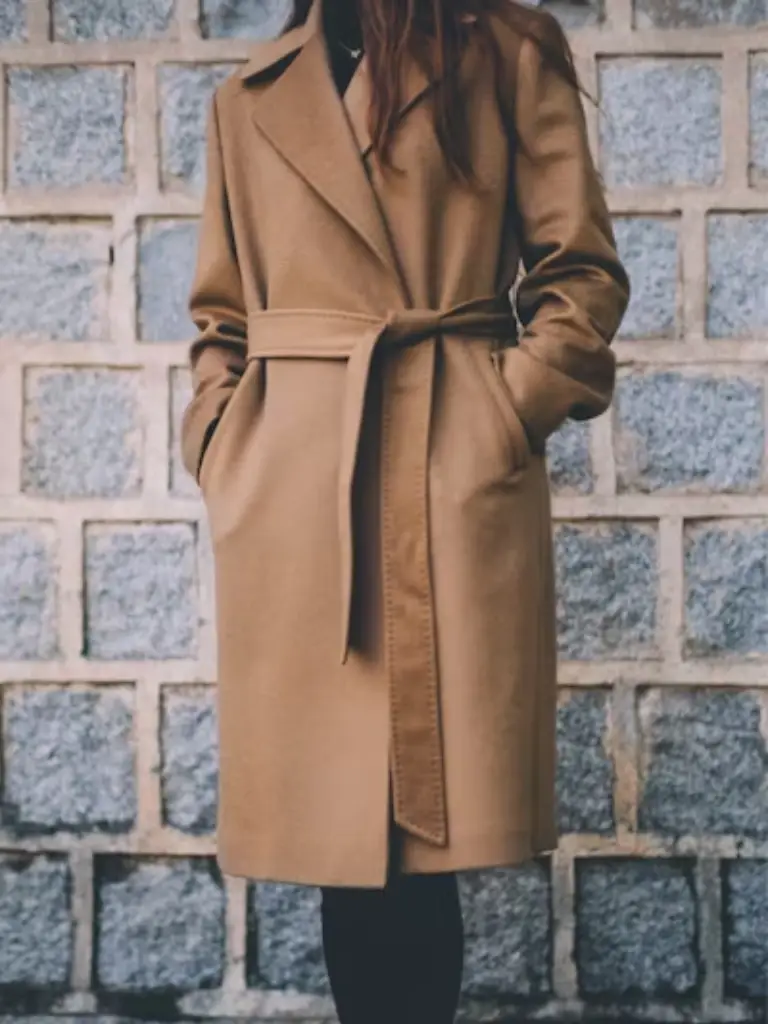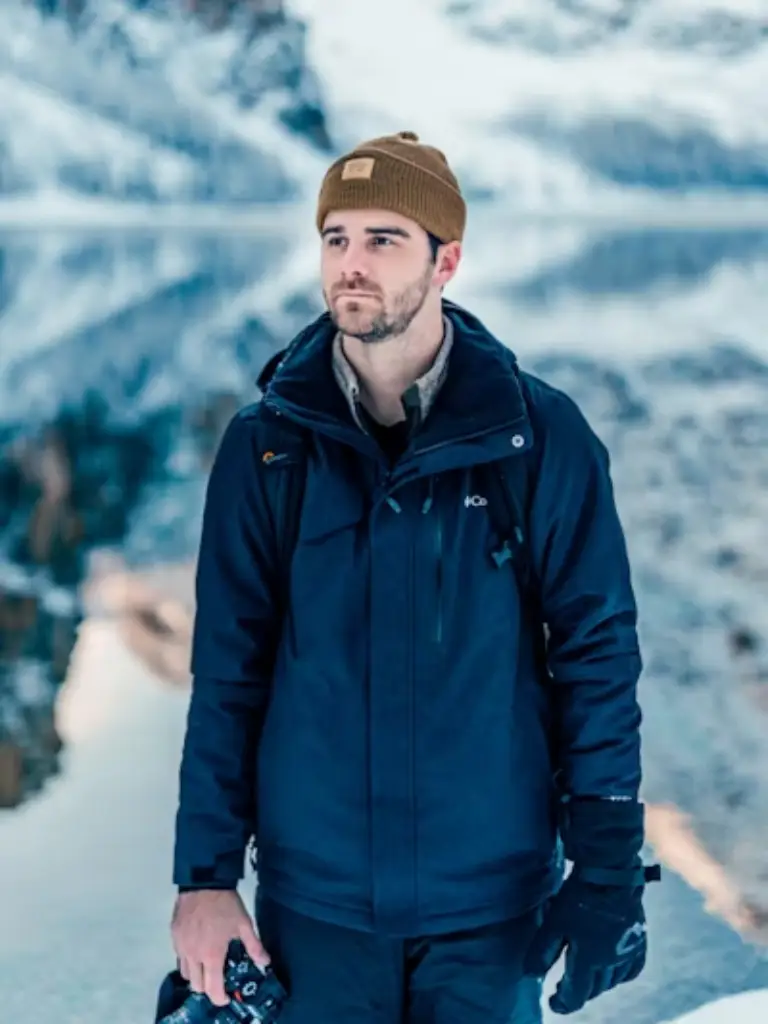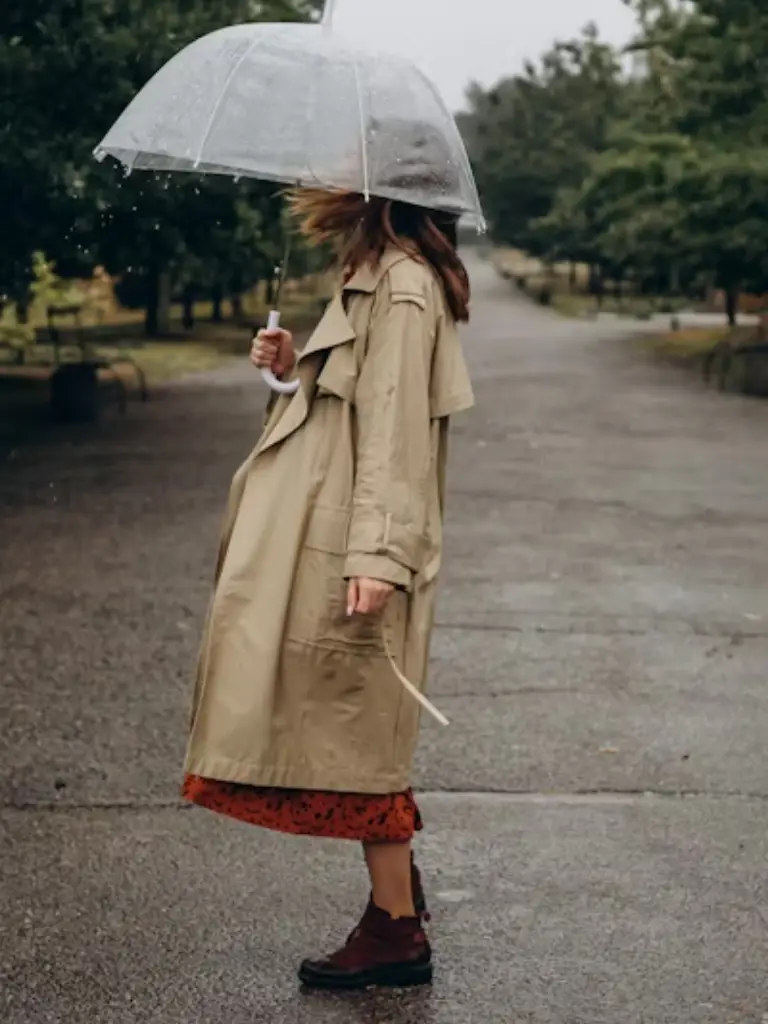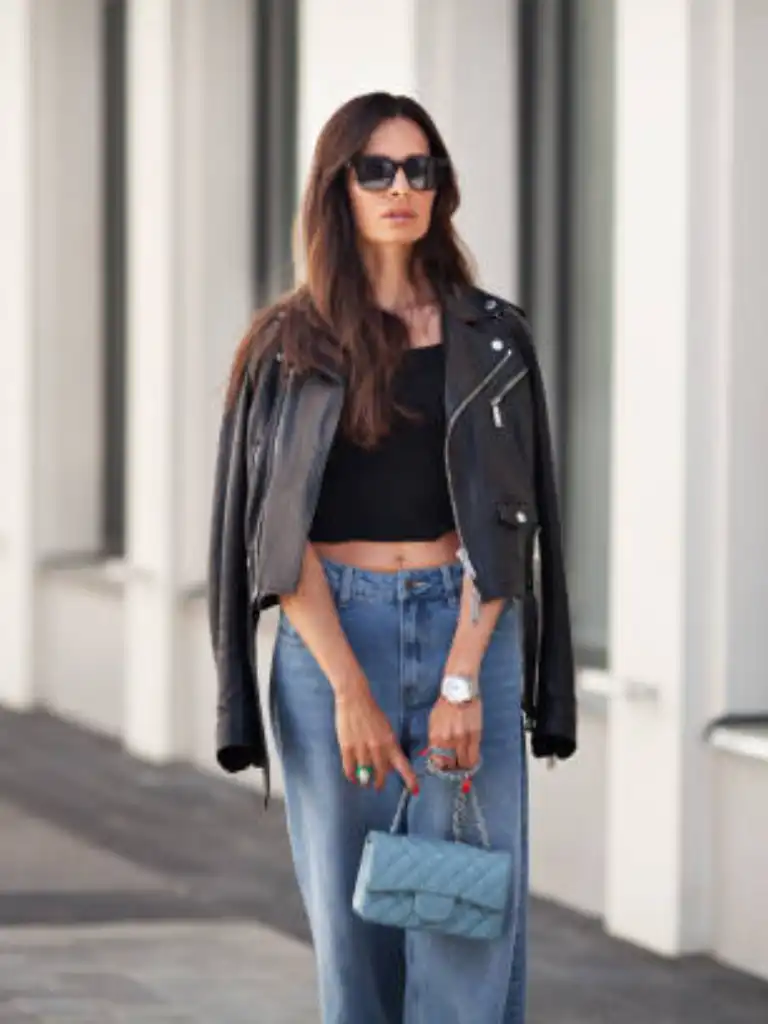Have you ever considered the main differences between a coat and a jacket and how each may serve you differently? What distinguishes one from the other when it comes to specific occasions? Are material and functionality more significant than fashion, or are they both equally significant? This tutorial seeks to clear up misconceptions by offering insightful analysis of the coat vs. jacket debate. By the time it’s all over, we want to have given you all the knowledge you need to make informed decisions in any circumstance – without having to guess. We can assist you in sifting through the bewildering array of outerwear options, from identifying the subtle distinctions between them to understanding how each complements your own style.
Table of Contents
What Is A Coat?

A coat is usually a bulky, thick coat made of warmer materials, such wool or herringbone, with the intention of providing the best possible protection from the cold. These longer-length clothing items cover a large percentage of the entire body, often reaching the knees or even higher. Coats are a wardrobe staple for cooler climates, acting as sophisticated investment pieces in the fashion business as well as a shield from the winter cold. Every style, from trench coats to pea coats, offers a special combination of utility and formality, which makes them a great option for both formal events and the harshness of winter weather.
What Is A Jacket?

Conversely, jackets provide a more casual clothing alternative. Usually terminating around the waist or hips, they offer less covering than coats since they are shorter. There are many different types of jackets, such as sport coats, bomber jackets, and denim jackets, made of fleece, polyester, and denim. Because of their variety, jackets are quite adaptable and work well in both cold and mild weather. They are regarded as a great choice for casual outfit styling, outdoor activities, and daily use.
Coat vs Jacket: The Fundamental Differences
Length and Coverage
Examining the distinctions between coats and jackets reveals that length and covering are two important factors. Because coats are meant to provide a lot of covering, they usually reach the knees or even the thighs. In addition to being aesthetically pleasing, this design decision is essential for protecting the user from the cold, which makes jackets a necessary piece of clothing in the winter. The extra length guarantees more warmth and protection, enveloping the body in a cozy cocoon that is very comforting as the temperature lowers.
In contrast, jackets have a shorter cut, which is consistent with the idea of fusing practicality with mobility. Jacket length is shortened for a purpose; it is not random. Above all, it allows the wearer to have a wider range of motion, which is particularly useful for everyday use or outdoor physical activity. Second, because of their shorter length, jackets have an air of relaxed elegance that allows them to be worn with many outfits and activities without sacrificing flair. Essentially, although coats and jackets provide cold weather protection, their differences in length and covering correspond to their specific uses, which might be either improved warmth or more movement and diversity in clothing.
| Feature | Coat | Jacket |
| Length | Reaches the knees or even the thighs | Shorter cut |
| Coverage | Provides a lot of covering, essential for cold protection | Designed for practicality and mobility |
| Style | Aesthetically pleasing, suitable for formal events | Relaxed elegance, versatile across many outfits and activities |
Material and Fabric Choices
Usually, stronger fabrics like wool, tweed, cashmere, and heavyweight cotton are used to make coats. These materials are selected because of their superior insulating qualities, which guarantee warmth during the winter. For example, wool is a common material for winter jackets because of its well-known capacity to retain heat. Heavyweight cotton offers a robust, although marginally lighter, substitute, while tweed and cashmere give comparable warmth with extra luxuries and flair.
On the other hand, jackets come in a greater variety of fabric options to suit a variety of sports and climates. Among the lightweight options are denim, which is well-liked for its robust and casual look; leather, which is well-known for its iconic status in fashion and wind resistance; and synthetic materials, such as polyester and nylon, which are frequently used in performance jackets because of their breathable and water-resistant qualities. Fleece jackets are perfect for layering or for transitional weather since they offer a medium level of comfort and warmth. To further clarify the selection of materials for different outerwear, the following table provides a detailed list of commonly used fabrics for coats and jackets:
| For Coat | For Jacket |
| Wool | Denim |
| Tweed | Leather |
| Cashmere | Polyester |
| Heavyweight Cotton | Nylon |
| Polyester (for waterproofing) | Fleece |
| Gabardine | Lightweight Cotton |
| Melton | Canvas |
| Herringbone | Softshell |
| Shearling | Gore-Tex (and similar waterproof/breathable fabrics) |
Functionality and Purpose
Since the main purpose of coats is to provide substantial warmth, they are appropriate for wearing throughout the winter months and should be a staple of any person’s ensemble. Since exhibiting personal flair is just as essential as remaining warm at formal or semi-formal gatherings, their polished and beautiful appearance makes them an excellent choice.
Jackets, on the other hand, are a great option for casual everyday wear because of their lightweight construction and adaptability. From easy strolls in parks to strenuous outdoor sports like hiking and jogging, they can accommodate a variety of activities. Jackets are especially preferred for these reasons because of their design, which places a strong emphasis on breathability and flexibility to guarantee comfort over any activity.
Knowing the many functions that coats and jackets serve makes it easier to choose the suitable clothing for the situation and the weather, guaranteeing that one’s look is acceptable and comfortable.
| Feature | Coat | Jacket |
| Purpose | Substantial warmth for winter | Casual wear, versatility |
| Occasion | Formal/semi-formal events | Everyday activities, outdoor sports |
| Appearance | Polished, elegant | Lightweight, adaptable |
| Functionality | Warmth in cold weather | Breathability, flexibility |
Decoding Different Styles and Types
Types of Coats Explained
In the enormous world of fashion, coats are more than just weather-resistant coverings; they are essential components that define trends, enhance outfits, and suit certain occasions. Let’s go more into the assortment of coat types, identifying their unique attributes and ideal circumstances.
Once intended for military use, the trench coat has become a staple of the contemporary wardrobe. The trench coat effortlessly combines utility and elegance with its knee-length design, sturdy water-resistant fabric, and waist belt. Because of its versatility, it may be worn for both dressy evening wear and rainy day errands.
Pea coats, with its nautical pedigree, provide a mix of tradition and modern elegance. These coats are known for their thick woolen fabric, which provides enough warmth. The unusual double-breasted front and large lapels lend to a classy yet ageless appearance. While initially developed for sailors, pea coats have become a staple in both men’s and women’s wardrobes, ideal for a variety of events ranging from casual to formal.
Overcoats and winter coats are indispensable for braving the cold months. Typically crafted from wool or a similar heavy fabric, these coats not only offer significant warmth but also a touch of sophistication to any winter ensemble. Overcoats usually extend below the knee and are perfect over suits or formal wear, while winter coats may come in a variety of lengths and styles, designed to be worn over everyday outfits.

Different Jacket Styles Demystified
As we move from coats to jackets, we come across a similarly wide range of designs that satisfy various demands and interests. The denim jacket, a representation of easygoing American style, gives ensembles a carefree yet fashionable edge. It is a must-have item for casual ensembles due to its longevity and simplicity of combining with other apparel.
Originating in military clothing, bomber jackets have grown in popularity due to its unique combination of style and comfort. They usually have a zipped front, ribbed cuffs and hem, and a waist-length cut. Bomber jackets provide a light layer of warmth and style, making them ideal for transitional weather.
Finally, blazers and sport jackets help to combine business and leisure attire. Both items provide an ensemble a polished appearance without the formality of a full suit. Sport jackets are often more laid-back, with textured materials and patterns, whereas blazers are more adaptable and typically solid in color, making them work well in social as well as professional contexts. Wearers can choose the perfect coat or jacket by being aware of these subtleties, assuring both comfort and style are in harmony.
Occasions and Suitability
When to Wear a Coat
The greatest times to wear coats are for formal events and really cold weather. A well-chosen coat is a great option for business meetings, weddings, or any other occasion when formality is required since it keeps you warm while also adding flair to your ensemble. They are particularly essential for everyday commutes in the bitter cold, when warmth and covering are critical.
When to Wear a Jacket
You should always wear a jacket for casual wear and outdoor activities because of their wide variety of designs and materials. A basic T-shirt and jeans may be transformed into a statement ensemble with a denim jacket, making it appropriate for a laid-back date or hangout with friends. Hoodies and bomber jackets are functional and fashionable pieces for a night out or athletic event. Lightweight jackets are the ideal combination of warmth and breathability on days when the weather is erratic.
Also Read: Down vs Synthetic Jacket: Which is Better for Cold Weather?
Fashion Tips: Coordinating with Your Wardrobe
Matching Coats with Formal Wear
Choosing the appropriate coat to go with your formal attire is essential for projecting confidence through your ensemble in addition to keeping a professional look. A well-selected trench coat or a modern, fitted overcoat may add a lot of flair and refinement to your suit without taking away from it. The fit is crucial in this case; the coat should accentuate your suit’s form rather than distort it. To preserve an aesthetically pleasing appearance, the coat’s shoulders should perfectly line up with the shoulders of your suit jacket, and its length should ideally stop just above or at the knee. A neutral coat, such as one in black, navy, or camel, also guarantees adaptability and facilitates a smooth transition between different suit colors and designs.
Integrating Jackets into Casual Outfits
On the opposite side of the closet, incorporating jackets into casual ensembles provides a plethora of stylistic options. When worn with a basic t-shirt, well-fitted jeans, and a pair of classic shoes, the modest denim jacket can create an effortlessly stylish and put-together look appropriate for a variety of informal settings, from a laid-back day in the city to a casual dinner with friends. The key to pulling off this style is the denim’s wash and fit; a light to medium wash and a snug, but not tight, fit provide the greatest adaptability. A blazer is the greatest option for days when you want to look somewhere between casual and formal. A jacket made of a loose fabric, such as cotton or linen, may give refinement to a casual look without overdressing. When paired with the proper accessories, such as leather belts, a fashionable watch, or casual loafers, a blazer may transform a plain ensemble to something thoughtful and deliberate.

Outerwear Care and Maintenance
Preserving the Life of Your Coats
The secret is to take good care of your coats to maintain them in great shape. To preserve the texture and formality of heavy coats made of wool or trench fabrics, it is advised to have them dry cleaned on a regular basis. Purchasing a high-quality coat hanger is also essential to keeping it in shape during the off-season.
More Tips for Coats:
- Avoid Over-washing: Only clean your coat when it’s necessary. Over-cleaning can wear out the fabric.
- Spot Cleaning: For small stains or spots, try spot cleaning with a mild detergent and cold water before opting for dry cleaning.
- Storage: Store your coat in a breathable garment bag during the off-season to protect it from dust and moths.
- Maintenance: Regularly check for any loose buttons or threads and repair them promptly to avoid further damage.
- Moth Repellents: Use natural moth repellents like cedar blocks or lavender sachets in your wardrobe to keep wool coats safe.
Keeping Your Jackets in Pristine Condition
Although jacket maintenance is typically less involved, it is nevertheless crucial. Many jackets are machine washable, which makes them easier to care for – especially ones made of denim or polyester. But following the maintenance recommendations provided by the manufacturer will guarantee that your coats stay in great shape for many years to come, increasing their wearability.
More Tips for Jackets:
- Zip and Button Up: Before washing, zip up or button your jackets to prevent them from snagging on other items or damaging the washing machine.
- Inside Out: Turn jackets inside out before washing to preserve their color and texture.
- Air Dry: Whenever possible, air dry your jackets instead of using a dryer to prevent shrinking and fabric damage.
- Leather Care: For leather jackets, use a conditioner every few months to keep the leather supple and prevent drying or cracking.
- Refreshing: Instead of washing, sometimes simply airing out or using fabric refreshers can be enough to keep your jackets smelling fresh and clean.
FAQs
Which One is Warmer? Coat or Jacket?
Answer: Because of their extended length, which provides more covering and protection from the cold, coats are in fact warmer than jackets. In colder areas, they retain body heat more effectively because to their thicker fabric and improved insulation. Coats are a better option for staying warm in cold weather because of their design, which has insulating linings and layers.
Which Brands of Stylish Coats and Jackets are Some of the Best?
Answer: Some of the best brands for stylish coats and jackets include Canada Goose, known for its durable and warm outerwear; Moncler, famous for high-end down jackets and stylish designs; and The North Face, which offers a combination of functionality and fashion in their products.
Final Thoughts
It’s essential to comprehend the coat vs. jacket debate if you want to battle the weather in elegance as well as functionality. Expert on jackets Fangyuan stresses the significance of selecting the appropriate outerwear to improve the adaptability of your wardrobe and guarantee you’re ready for any event or weather. Picking the appropriate garment is essential, whether it’s the sophistication of a coat for a formal occasion or the casual attitude of a jacket for daily use. As Fangyuan would say, remember that staying warm isn’t the only thing to do – you also need to do it stylishly.
